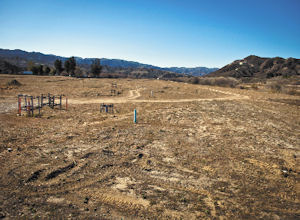After years in the doldrums, the industrial market in the Valley region appears to be turning a corner, raising the prospect of rent increases this year as the economic outlook has improved. Last year, the market saw its busiest year for transaction volume since 2007, according to data from Colliers International. Area brokers say limited new construction, slow job growth and a largely built-out Valley should begin to finally push up rental rates and drive down vacancy this year. “I have been the busiest in the last five weeks than I have been since September of 2007,” said Executive Vice President Ron Kassan of Beitler Commercial Realty Services. “Finally I get to come up for air and breathe deeply and benefit from some of the deals being made.” In the fourth quarter of 2011, the greater Valley’s industrial market had a vacancy rate of 4.8 percent for buildings with 30,000 square feet or greater, a 0.5 percentage point increase from the same period last year, according to Jones Lang LaSalle. Asking rents remained flat at 55 cents per square foot per month. However in the Valley, the recovery remains choppy — cordoned off into the have-and have-nots. Unlike other industrial powerhouses in Southern California, such as the Inland Empire and the South Bay, the Valley’s industrial base relies more on small manufacturers than the ports. That reliance on myriad firms makes each individual submarket a microclimate and makes it more difficult for the entire region to rise as one, experts say. “It’s not a rising of the tide yet, it’s just selected areas where someone is doing quite well,” said Executive Vice President John DeGrinis of Colliers International. If rent increases come, they won’t be widespread, he said, they’ll be limited to highly valued markets. Take the Santa Clarita Valley. Vacancy in that submarket fell from 6.8 percent in the fourth quarter of 2010 to 5.4 percent at the end of last year while average asking rents remained flat at 46 cents per square foot per month, according to Jones Lang LaSalle. And the market’s tightness and increased user activity has several developers readying their shovels. But head southwest and you’ll hit hard times. The vacancy rate in Simi Valley and Moorpark was 9.6 percent at the end of 2010 and jumped to 14.4 percent a year later. Rents fell three cents to 54 cents per square foot a month. Principal Grant Fulkerson of Lee & Associates-LANorth/Ventura Inc. said the area also has been hampered by several vacant mega-warehouses. Several have large swaths of difficult-to-demolish mezzanine office space. That makes the buildings less attractive to firms that need less office space in today’s online world, he said. One of the Valley’s oldest industrial markets — the east San Fernando Valley —remains one of the tightest, although its vacancy rate jumped nearly one percentage point last year to 3.6 percent, according to Jones Lang LaSalle. Senior Vice President Jeff Puffer of Delphi Business Properties Inc. said concessions have eased in the East Valley and landlords are beginning to raise their asking rates for properties coming on the market. By the end of the year, rents on average will likely rise 5 percent Valley-wide and about 10 percent in the East Valley, he said. Puffer said he sees a lot of smaller users — companies that may have left their warehouse to work out of a friend’s when the economy soured — are once again looking for their own space. That movement has foreshadowed an improving market before, he said. But the improving industrial market has spurred little new construction, in large part due to the lack of available land in the San Fernando Valley. According to Colliers International, 939,700 square feet of industrial space has been proposed in the greater Valley, but builders are waiting until the market improves to turn dirt. But that could change, said Executive Vice President Nigel Stout of Jones Lang LaSalle. As the economy improves, rents should increase Valley-wide about 5 to 10 percent this year, encouraging new development, he said. Historically low rates for SBA loans, Fulkerson said, also have helped keep the Simi Valley market for smaller industrial buildings brisk even as the larger market struggles. It will take awhile to take the large blocks off the market, he said, but a slowly improving economy and limited new construction will help conditions improve. Driving back from showing a prospective client the Simi Valley neighborhood, Fulkerson said: “It’s only going to get better from here on out.”
